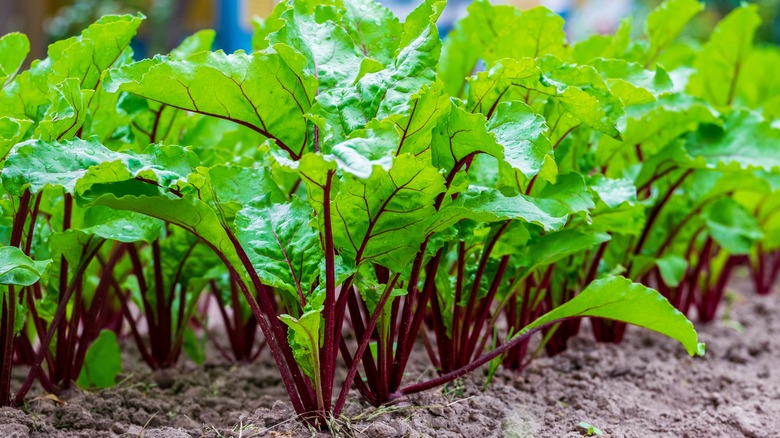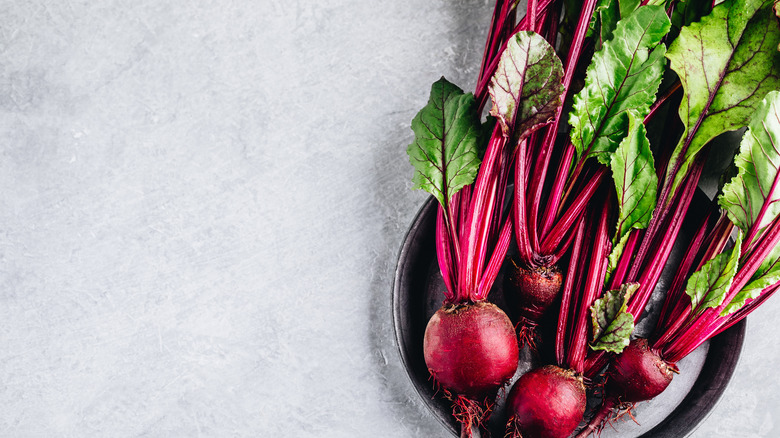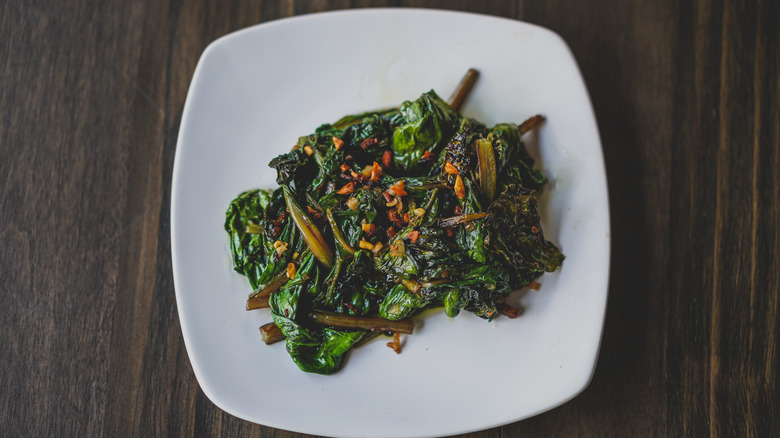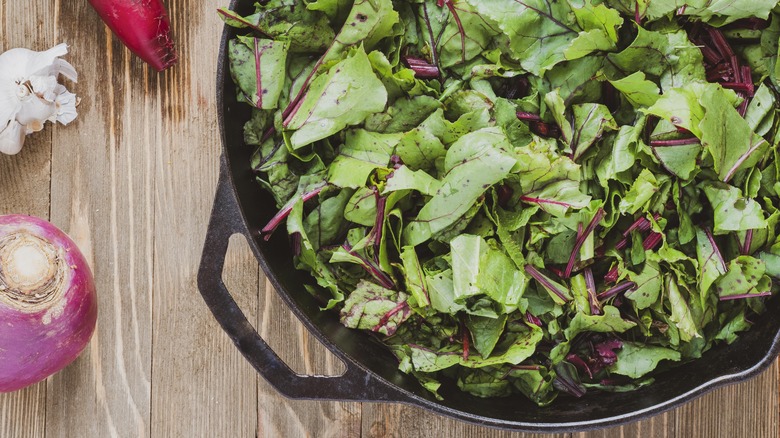Beet Greens: What They Taste Like & How To Cook Them
The greens are the unsung hero of the beet plant. Too often ignored or discarded in favor of the sweet, earthy root, beet greens are actually an incredible ingredient all on their own. When you buy a bunch of beets, you are in fact getting two separate ingredients that you can prepare in two different ways. According to Dr. Lam Coaching, these greens are also packed with nutritional benefits such as vitamin C, fiber, and antioxidants.
Don't let not knowing what to do with them stop you from enjoying the depth and versatility of this ingredient — they are very easy to use and will work in countless recipes. Typically, when people think of beets, they are thinking about beetroot. If you like the mild, earthy flavor of the beet, you will find the greens to be a natural extension of this taste, comparable in texture and in use to spinach, kale, or mustard greens.
What are beet greens?
Beets are delicious when roasted and make a great addition to salads, side dishes, and more. But the part of the plant that grows out of the ground also has a versatile presence in the kitchen, even though it doesn't get the same amount of attention. When you buy a bunch of beets, they will most often be bound together at the stems. The thin stalks that shoot out of the beetroot have a delicate, colorful stem — usually garnet or golden in color to match the color of the beets.
On the other hand, the leaves have a spinach-like texture with a thin, stem-colored membrane. Like beets themselves, beet greens are best defined by their earthy flavor. The greens are mild and tender. The stem is slightly more fibrous, but not tough. Upon cooking, the stems provide a delightful crunch to contrast the soft texture of the greens, similar to Swiss chard.
How to cook beet greens
Beet greens have the cooking flexibility of kale, spinach, and many other greens. To prepare, wash well and cut away the base of the stems. They don't need anything special to stand alone as a side dish — simply sautee chopped beet greens in olive oil with garlic until tender, and top with parmesan or vinaigrette if you prefer it. Beet greens always look pretty upon presentation because the brightly colored stems stand out beautifully against the deep green of the leaves.
Beet greens can also be consumed raw. To serve them this way, simply chop the greens into bite-sized pieces and add them to a salad or smoothie. If you are cooking a more complex dish, substitute beet greens for any other leafy green. They add an earthiness and depth of flavor to your favorite pesto recipe, a hearty bowl of zuppa Toscana, or traditional Irish colcannon.
If you're looking to incorporate them into a dish, try out our cranberries with beets and cardamom recipe that features the fruit and adds the greens to the saucepan towards the end of the cooking process.
How to store beet greens
You can store beet greens in much the same way that you would other hearty greens. Wrap them delicately and stow them in the crisper drawer of your refrigerator. The primary difference in storing these greens is that beet greens usually come attached to the beetroot. Go ahead and clip the greens from the roots and store them separately — this will also help the roots last longer. Once in the refrigerator, the greens will last a couple of days.
You can extend the life of your beet greens by keeping them in the freezer. To do this, wash, blanch, and cool the greens. Then, freeze them on a sheet pan to avoid clumping before putting them all in a freezer bag or container. This process extends the life of your beet greens by several months, making them a quick and easy addition to your favorite recipes.



